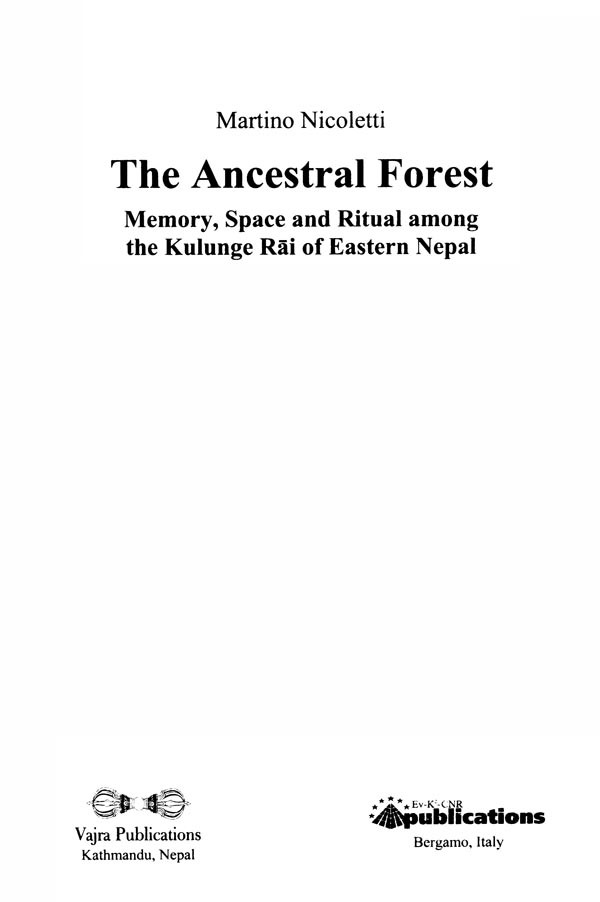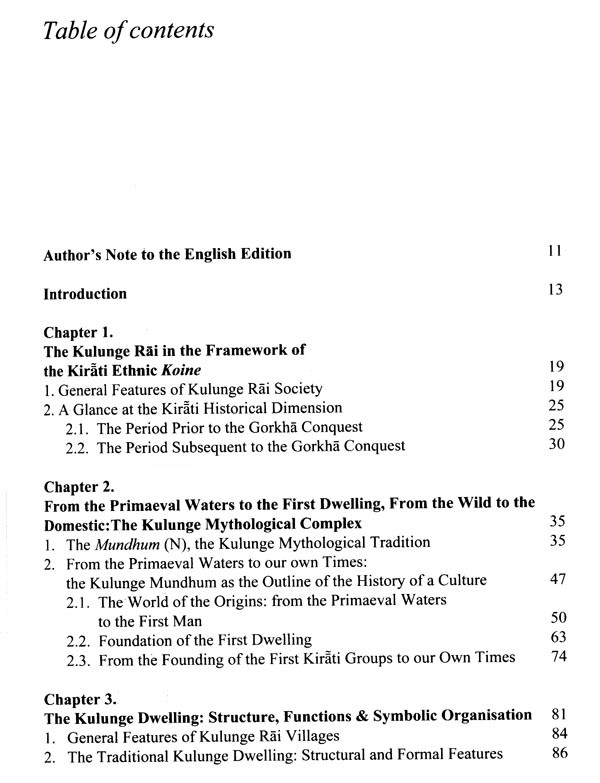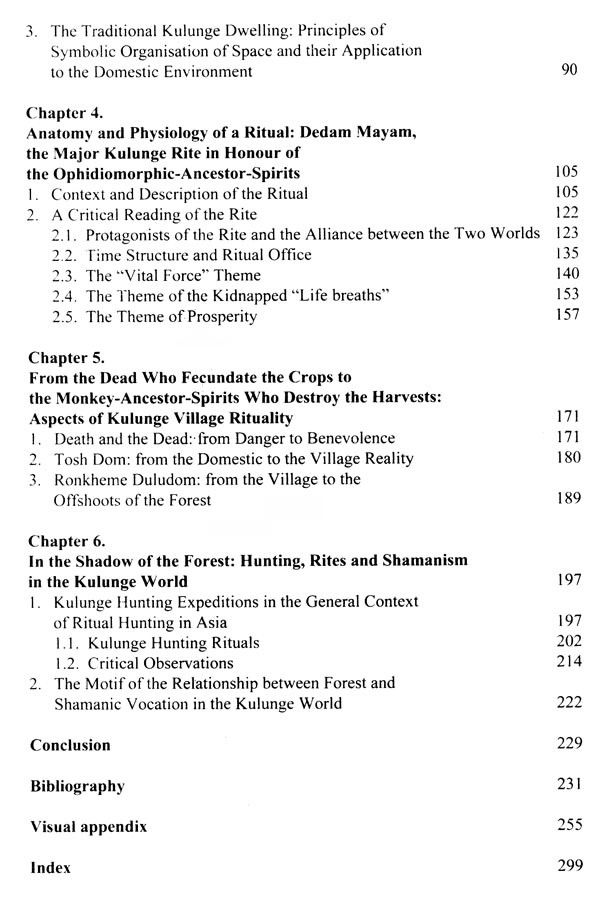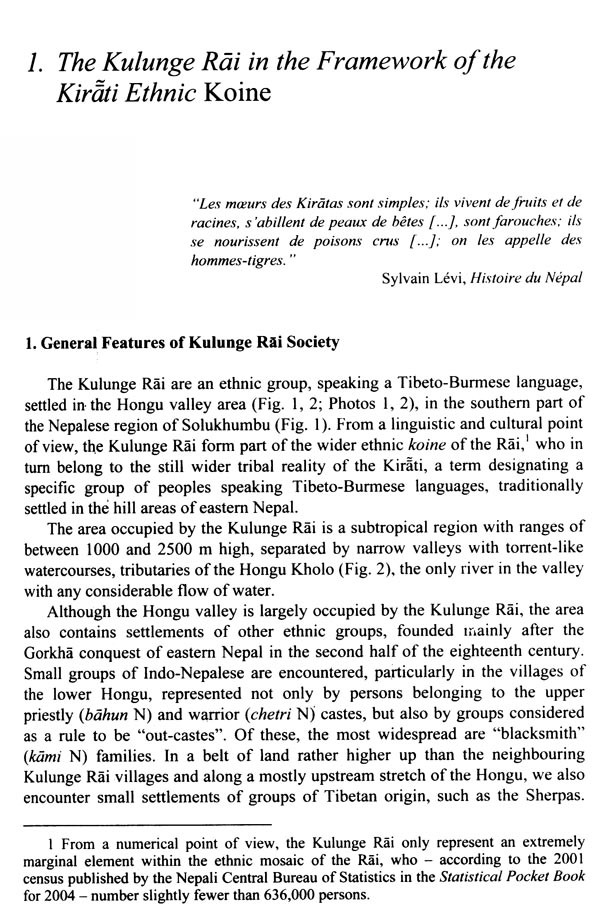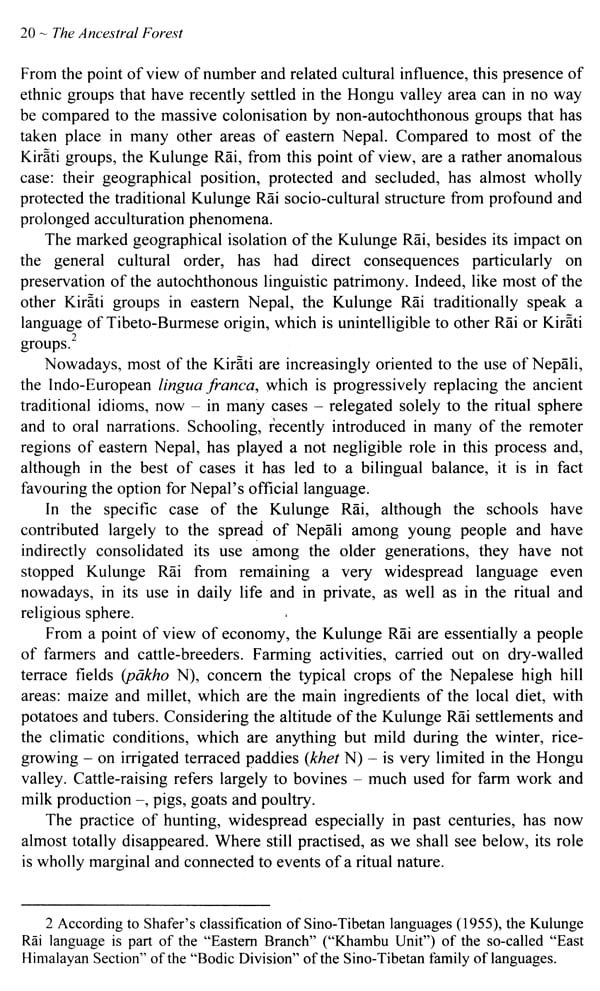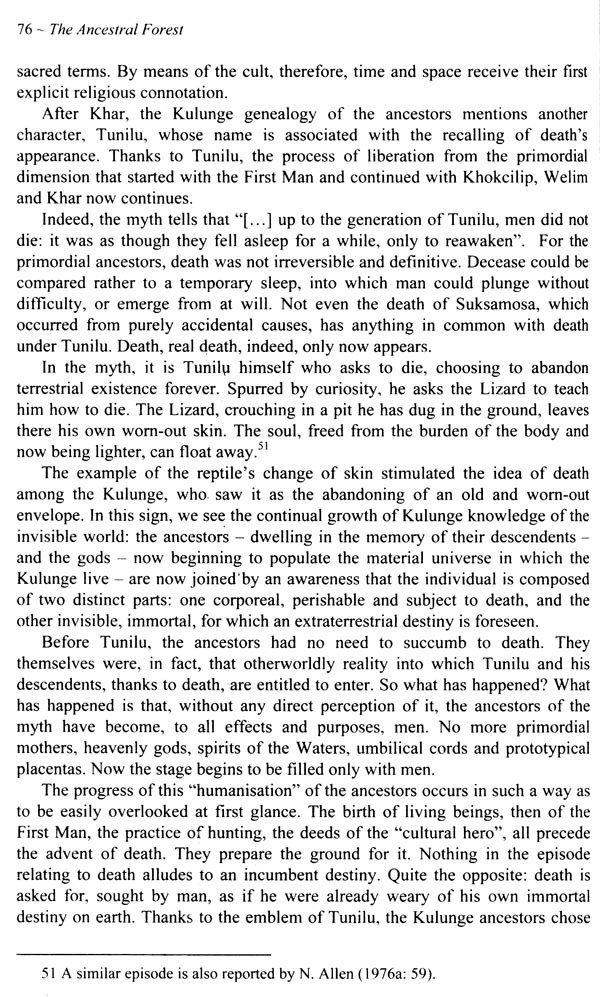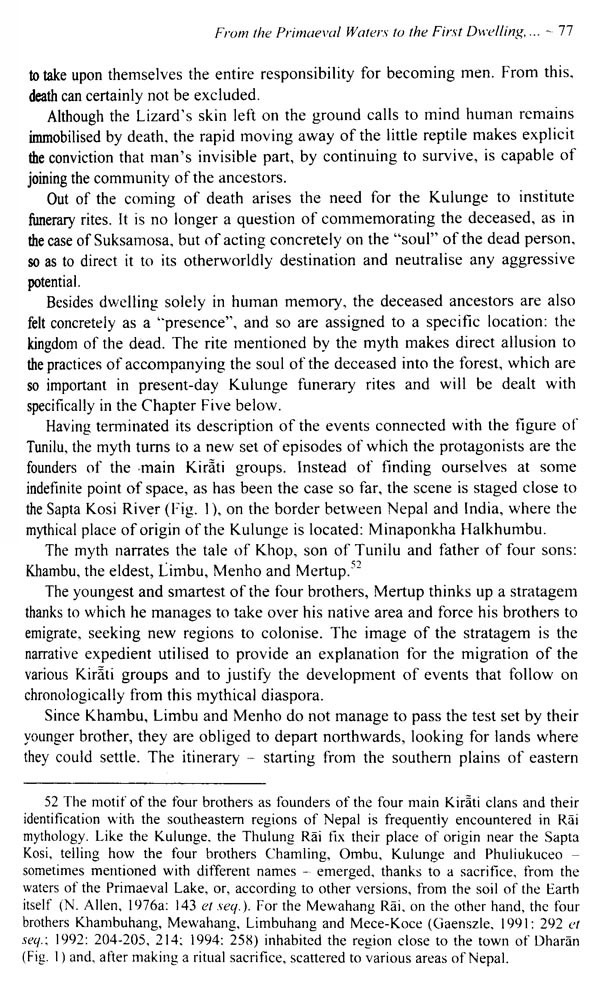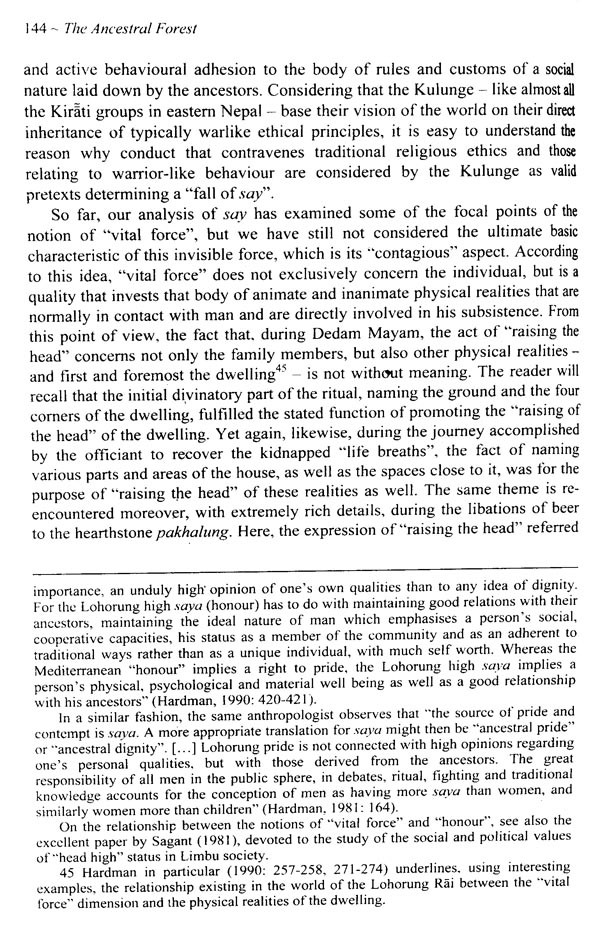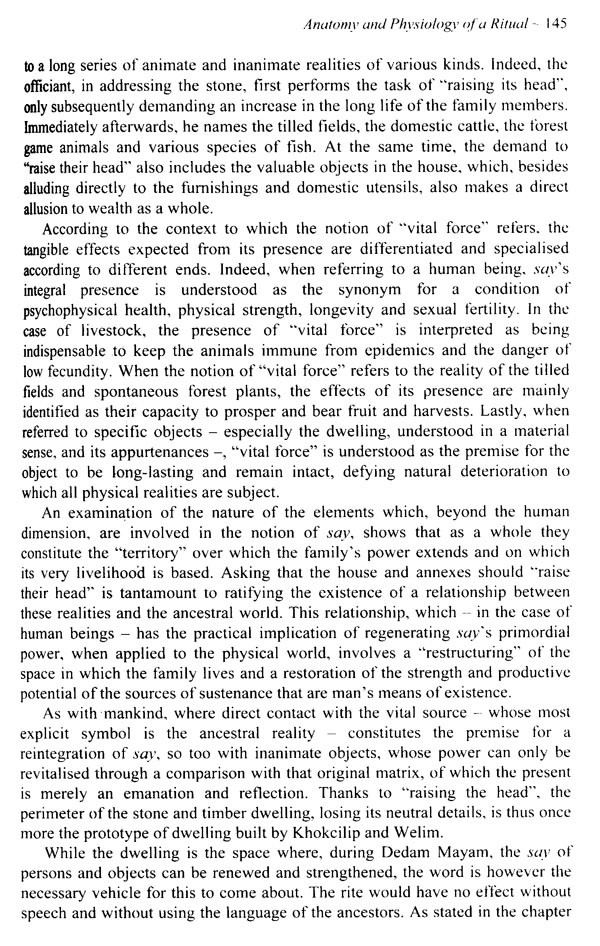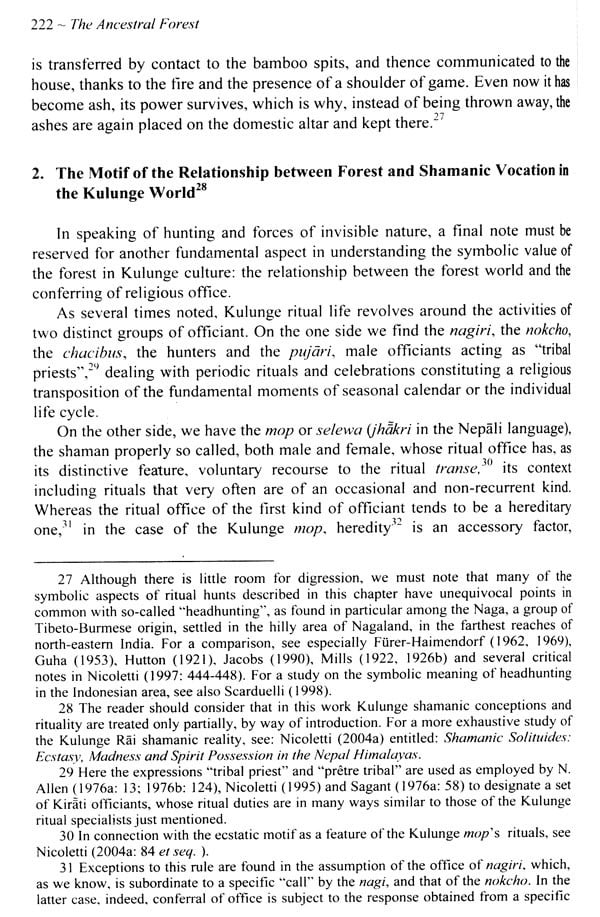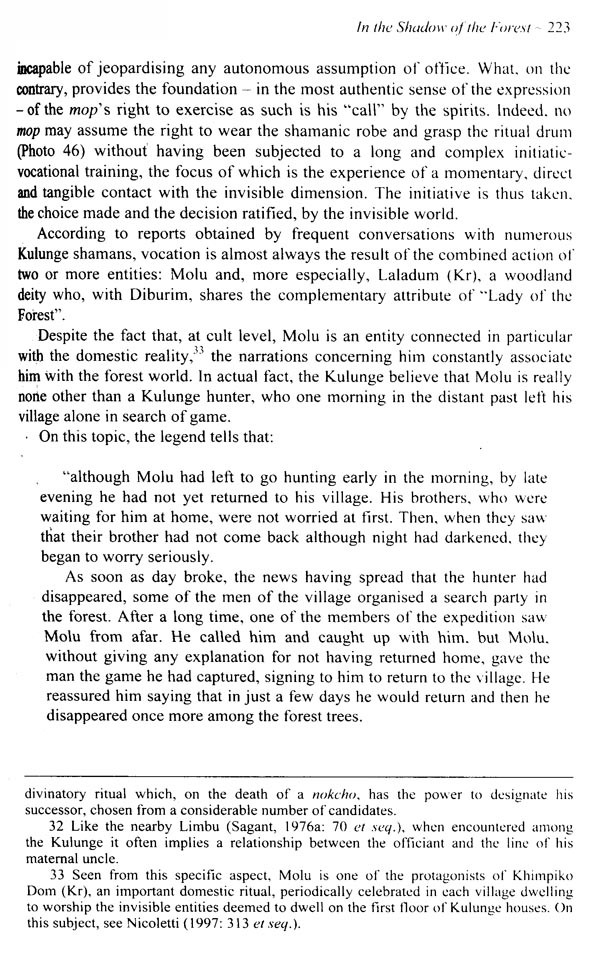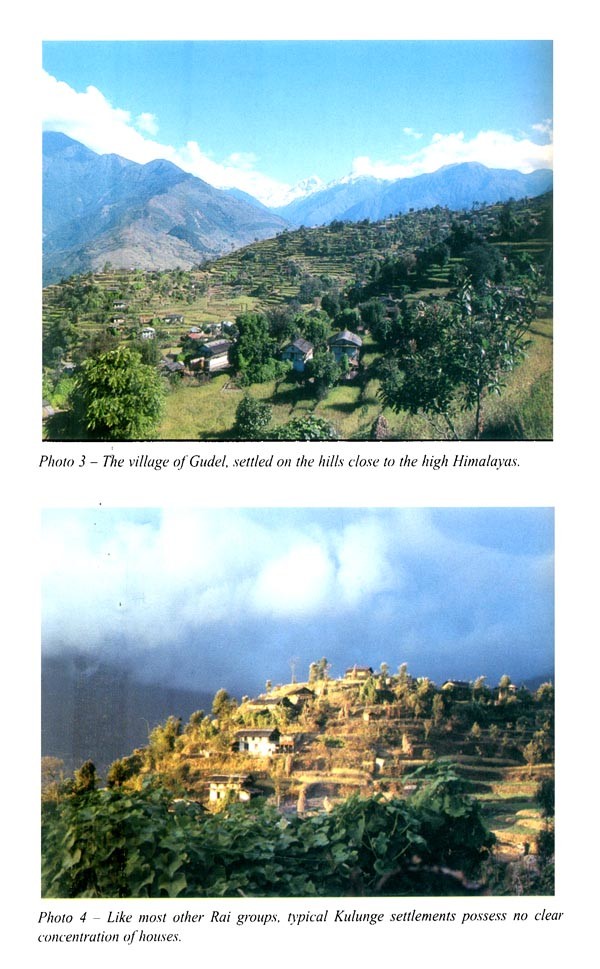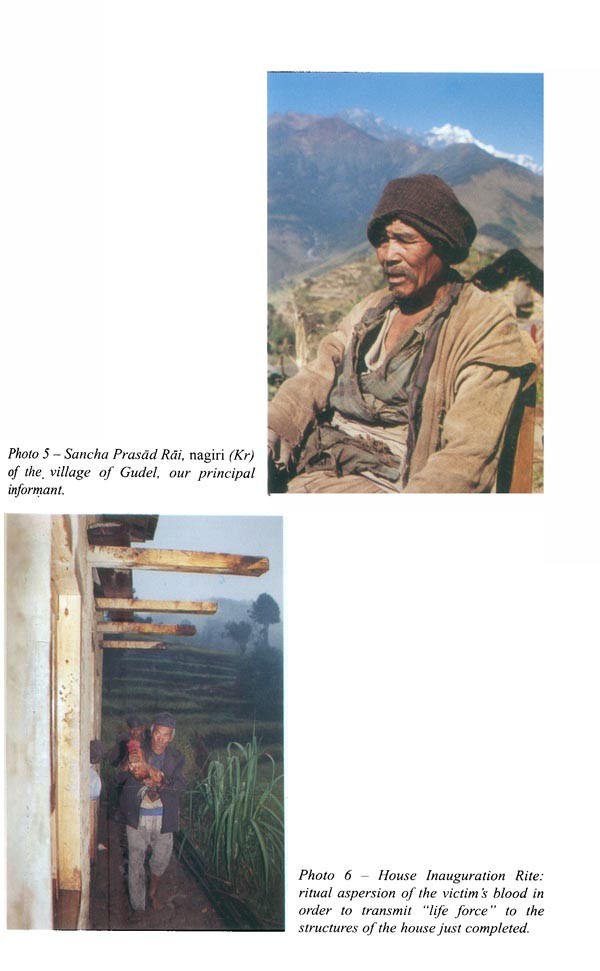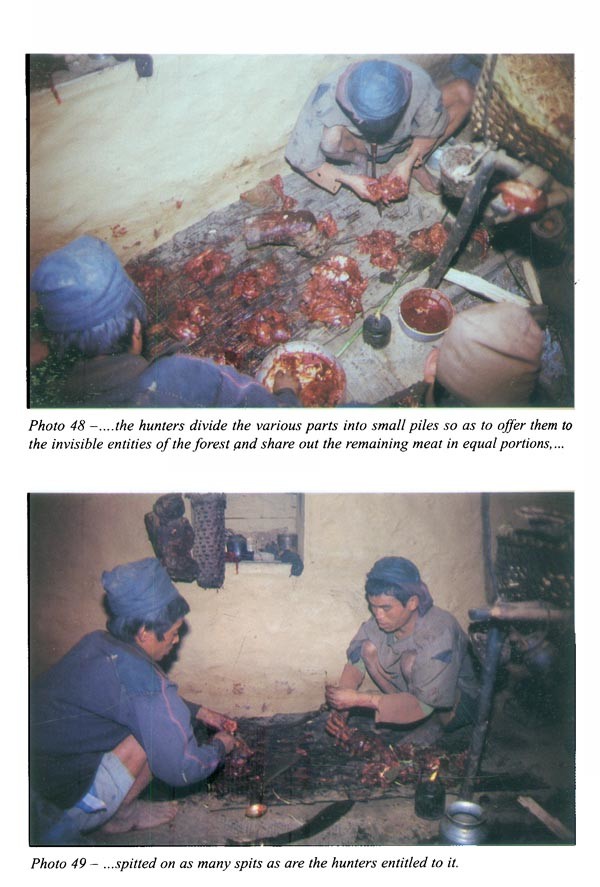
The Ancestral Forest- Memory, Space and Ritual Among the Kulunge Rai of Eastern Nepal
Book Specification
| Item Code: | UAO550 |
| Author: | Martino Nicoletti |
| Publisher: | Vajra Publications, Nepal |
| Language: | English |
| Edition: | 2006 |
| ISBN: | 9789994672028 |
| Pages: | 304 (Throughout Color Illustrations) |
| Cover: | PAPERBACK |
| Other Details | 9.00 X 6.00 inch |
| Weight | 420 gm |
Book Description
A fascinating journey through the oral memory, the sacred geography and religious imaginary of this people. An ideal itinerary that progressively abandons the inhabited world and enters the abysses of the mythical woodlands the silent witnesses of the group's ancient life style - only to lose itself in the thick of the immense forests that even today surround the settlements of the Kulunge Rai.
Starting from the cults of domestic deities, the research goes on to analyse the rituals that accompany the souls of the dead and the village farming cults, as a necessary step before dealing with the hunting cults and the hidden paths beaten by Kulunge Rai shamans.
After DEA France in Ethnologie générale comparative at (Nanterre) specialising oriental visual anthropology, he obtained doctorate Ethno anthropological Research (University of Siena 1997), among Tibeto-Burmese language groups.
Formerly lecturer in Visual Anthropology and History Religions at University Perugia since has National Co-ordinator the Anthropology Communication Development (Ev-K2-CNR Commitee Association Bergamo, Italy).
The hunt is carried out with great care and circumspection. The hunters know that in the forest they are outside the dominion of human power and have entered the sphere of chaotic forces with an uncontrolled and ambivalent character. They are in constant danger of being struck by the arrows of the hunter-spirits roving in bands close to springs and streams. Similar is the risk of encountering the monkey-spirits, who can steal a person's "life breath", or of meeting the "souls" of those who have died a violent death, who as a rule elect their dwelling in the forest itself. Here, too, Laladum dwells, a entity with the aspect of a little girl, the initiatrix of young shamans: to contaminate - even by one's mere physical presence one of her many forest dwellings attracts her wrath and, consequently, involves becoming a victim of her evil magic power.
**Contents and Sample Pages**
